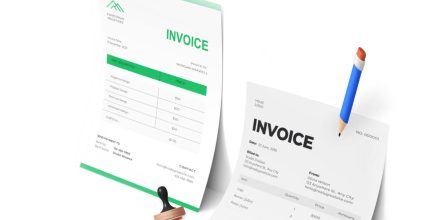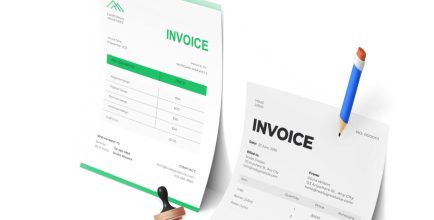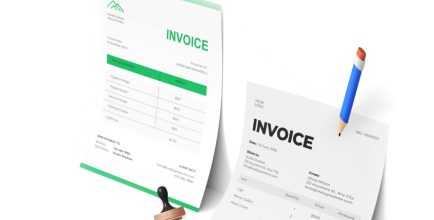The Role of AI in Predictive Invoicing
AI technologies are employed in predictive invoicing through sophisticated machine learning algorithms and data analytics techniques. These systems meticulously sift through vast amounts of historical payment data, identifying trends and patterns that may not be immediately visible to the human eye. By analyzing factors such as payment timings, amounts, and frequency, as well as the specific conditions under which payments were made or delayed, AI can uncover insights into customer payment behavior.
This process involves several steps, beginning with data collection, where historical invoice and payment records are aggregated. The data is then prepared and cleaned to ensure accuracy and relevance. Machine learning models are trained on this historical data, learning to recognize patterns associated with prompt or delayed payments. Over time, these models become increasingly sophisticated, allowing them to make more accurate predictions about future invoicing scenarios based on past behaviors. This predictive capability enables businesses to tailor their invoicing strategies, addressing potential issues before they arise and optimizing their cash flow management.
Benefits of Predictive Invoicing
Enhancing Cash Flow Management Through Accurate Forecast and Optimization of Payment Terms
Utilizing AI for predictive invoicing significantly enhances cash flow management by providing businesses with an accurate forecast of when invoices are likely to be settled. This foresight enables companies to optimize their payment terms, creating conditions that align with their clients’ payment behaviors. By tailoring terms to better fit the financial habits of their customers, businesses can reduce the duration of their payment cycles, thereby improving liquidity. This optimization process not only ensures a steadier cash inflow but also reduces the financial strain caused by unpredicted payment delays.
Improving the Likelihood of Prompt Payments
A critical benefit of predictive invoicing is its ability to improve the likelihood of receiving prompt payments. By analyzing historical data, AI identifies the most effective timing for invoice dispatch, which is crucial for accelerating payment receipts. This approach takes into consideration various factors, such as seasonal fluctuations, industry-specific trends, and individual client payment histories, to determine the optimal moment for sending out invoices. Consequently, businesses can strategically issue invoices at times when they are most likely to be processed quickly, thus minimizing the risk of late payments and enhancing the overall efficiency of the receivables management process.
Operational Advantages
AI-driven invoicing solutions significantly streamline the entire billing cycle, offering a strategic edge in operational efficiency and receivables management. By automating the invoicing process, these technologies reduce manual tasks, minimizing errors and freeing up valuable time for finance teams. This automation extends from generating and sending invoices to flagging overdue payments and suggesting follow-up actions. Such efficiency not only accelerates the payment process but also enhances the accuracy of invoicing, reducing discrepancies that can delay payments.
The strategic advantages of implementing AI in receivables management are profound. AI-driven tools provide real-time insights into payment trends and customer behavior, enabling businesses to proactively manage their accounts receivable. This proactive approach reduces the risk of late payments and bad debt, which directly impacts a company’s bottom line. Furthermore, by leveraging predictive analytics, businesses can identify at-risk clients and take preventative measures, such as adjusting payment terms or initiating early dialogue around upcoming invoices.
Operational efficiency is further enhanced through the integration of AI solutions with existing financial systems, facilitating seamless data exchange and automating routine tasks. This integration ensures that invoicing aligns with other financial processes, creating a cohesive management system that reduces inefficiencies and optimizes cash flow.
Challenges and Considerations
Ethical Considerations
The move towards predictive invoicing invites ethical scrutiny, particularly around AI and machine learning models that rely on historical data, which might contain inherent biases. These biases could be perpetuated in future invoicing strategies, unfairly affecting certain customer groups. It’s crucial for companies to maintain transparency and conduct regular audits of their AI systems to ensure ethical integrity and avoid reinforcing existing biases.
Data Privacy Concerns
Implementing predictive invoicing necessitates handling sensitive customer data, raising significant data privacy and security concerns. Companies must adhere to stringent data protection regulations, like the GDPR in the EU, and implement robust security measures to protect customer information and maintain trust.
Operational Obstacles
Integrating AI-driven predictive invoicing systems with existing financial operations can present numerous challenges. These include the need for technical expertise, the potential disruption to current processes, and the requirement for staff training. Businesses must plan meticulously and may need to seek external expertise for a smooth transition.
Cost Implications
Adopting predictive invoicing solutions entails substantial costs, including software development or acquisition, system integration, training, and ongoing maintenance. Particularly for SMEs, these costs may be daunting, necessitating a detailed cost-benefit analysis to ensure the financial viability of such an investment.
Conclusion
The adoption of Artificial Intelligence (AI) in invoicing marks a significant evolution in business cash flow and receivables management. Through predictive invoicing, AI technologies address common issues like payment delays and billing inefficiencies, streamlining the receivables process and enhancing operational effectiveness. However, this innovation is not without its hurdles, including ethical questions, data privacy issues, and integration challenges.
Businesses eyeing this advanced invoicing approach must carefully consider these obstacles, conduct detailed cost-benefit assessments, and plan meticulously for smooth integration. The trajectory of invoicing is set towards digitalization, promising that, with careful application, predictive invoicing could substantially improve financial operations and establish a more robust financial foundation for firms across the board.



